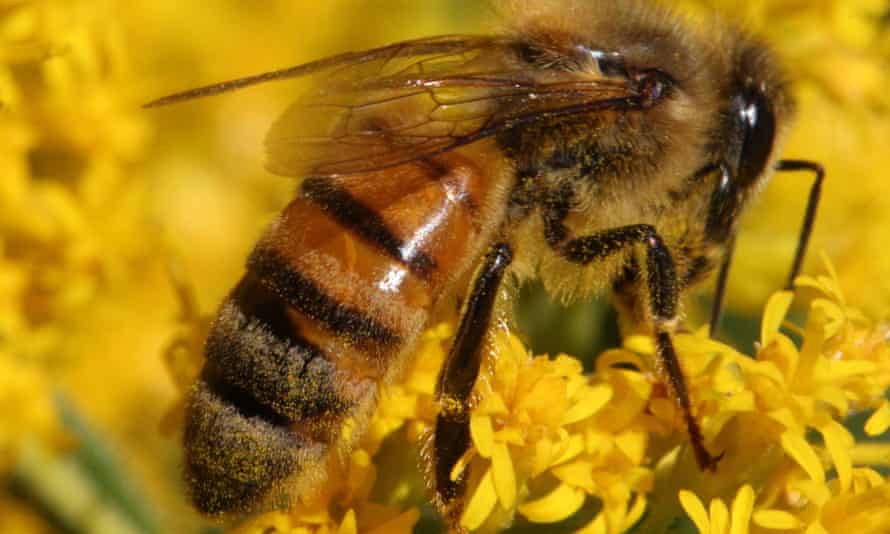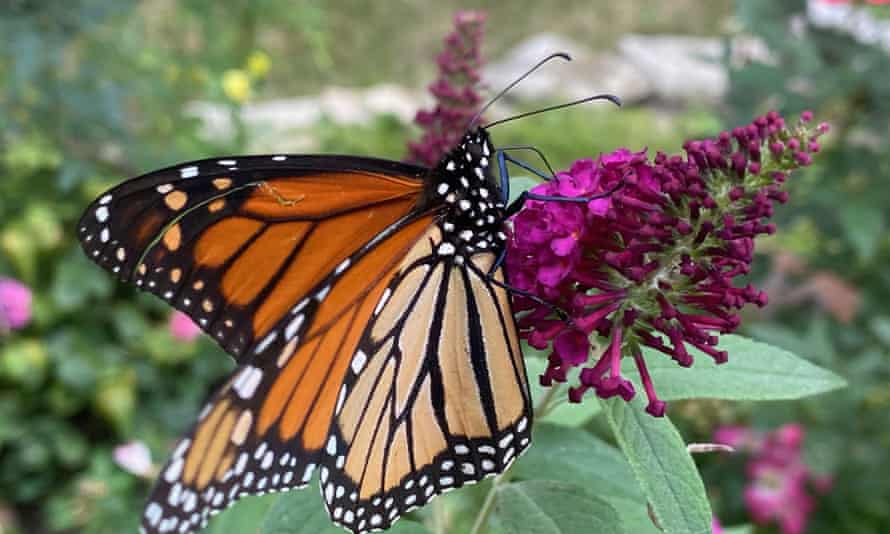Insects are vanishing from our planet at an alarming rate. But there are ways to help them
In Germany, flying insects have declined by 76% in 26 years. In the UK, common butterfly populations have fallen by 46% since 1976. We should be alarmed by this insect apocalypse

Insects have been around for more than 400m years, their ancestors crawling from the oceans to colonise the land long before dinosaurs appeared. They have been enormously successful, evolving into a staggering diversity of more than 1m known species, with perhaps as many as another 4m yet to be described by science. There are more than 300,000 different types of beetle alone. I have been obsessed by insects for all of my life; they are amazing, are often beautiful, and lead fascinating, peculiar lives.
What’s more, the world would not function without these tiny creatures: they pollinate our plants; control pests; recycle all sorts of organic material from dung to corpses, tree trunks and leaves; keep the soil healthy; disperse seeds, and much more. They are a vital source of food for many larger creatures such as birds, bats, lizards, amphibians and fish.
It should thus be of deep concern to all of us that insects appear to be disappearing from the earth at alarming rates. In Germany, flying insects have declined by 76% in just 26 years. In the UK, our more common butterfly populations have fallen by 46% since 1976, and the rarer ones by 77%, despite great efforts to protect them by conservationists. Thirteen bee species in the UK have gone extinct and more will probably follow. In the US, the celebrated monarch butterfly, famed for its annual migration between Mexico and Canada, has declined by more than 80% since the 1980s. The monarch population west of the Rockies is down 99.9% in the last couple of decades and looks headed for extinction within a year or two.
I vividly remember my parents, when I was a child, having to stop the car on long summer journeys to scrub clear the windscreen, which quickly became crusted with splatted insect corpses as we drove. Today, our windscreens are disturbingly clean. The data is patchy, since many insects are not carefully monitored, but the data we do have almost all points to a rapid, ongoing collapse of insect populations around the world. This mass disappearance has happened within our lifetime, on our watch.
The causes of insect declines are many: loss of habitat to intensive farming, housing and other development; the ever-growing blizzard of pesticides used by farmers and gardeners; the climate crisis; light pollution; the effects of invasive species and more. Our tidy, pesticide-infused world is hostile to most insect life, save for the toughest, most adaptable species, such as cockroaches, mosquitoes and houseflies.

This may all seem terribly depressing, but do not despair. We feel helpless in the face of many global environmental problems, but we can all get involved in halting and reversing insect declines. Most insects have not yet gone extinct, and they could recover quickly if we just gave them some space, somewhere to live and feed in peace. If you are lucky enough to have a garden, you can take some simple steps to invite insects in; in North America, the Xerces Society can provide advice. It is astonishing how much life a small garden can support. The biologist and wildlife gardener Jenny Owen spent 35 years obsessively cataloguing every plant and animal that she could find in her modest eighth-of-an-acre garden in urban Leicester, an area of the UK not famed for its rich wildlife. She recorded no less than 2,673 different species, 1,997 of which were different types of insect.
Britain has about 22m private gardens, the US an estimated 43m. Just think how much life they could collectively support if they were all wildlife-friendly. Grow a single marjoram plant, perhaps in a pot on your balcony or roof terrace, and when it blooms I guarantee that the bees, butterflies and hoverflies will sniff it out. You can feel smug that you have done something to help. Now do something more!
If you have no garden, you might consider joining national and local campaigns to fill our urban green spaces with wildflowers, or to have your town or village declared pesticide-free. Imagine every garden, park, cemetery, roundabout and road verge filled with swathes of wildflowers; we could create a national network of wildlife-rich habitat.
Of course we cannot forget the bigger issue of how we grow food. It is my view that the move towards ever-more intensive farming is unsustainable; it has done terrible damage to our wildlife and soils, pollutes streams and rivers, and is a major source of greenhouse gas emissions. British farmers apply 17,000 tons of pesticides to the landscape every year. The figure for the US is a staggering 450,000 tons. The federal government recently announced that 2.6m acres of Montana rangelands are to be sprayed with insecticides via crop dusters, to control native grasshoppers. The collateral damage done to other insects such as the monarch butterfly is incalculable; countless trillions will die. Little wonder that insects are in decline.
It is hard for most of us to do much about these farming practices, but we can reduce our own impact and support more sustainable farming practices by buying and eating local, seasonal, organic produce, buying loose fruit and vegetables and reducing our meat consumption. Better still, we can grow some of our own food in a garden or allotment.
Love them or loathe them, we all need insects. Three-quarters of the crops we grow need pollinators. We have to learn to live in harmony with nature, seeing ourselves as part of it, not trying to rule and control it with an iron fist. Our survival depends upon it, as does that of the glorious pageant of life with which we share our planet.
-
Dave Goulson is a professor of biology at the University of Sussex and the author of Silent Earth: Averting the Insect Apocalypse, to be published by HarperCollins on 28 September 2021